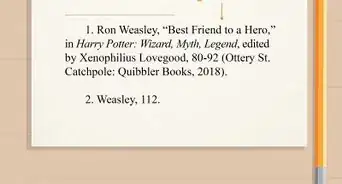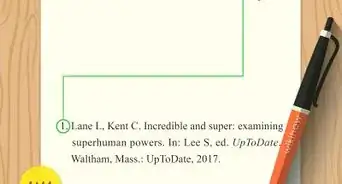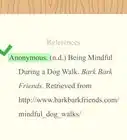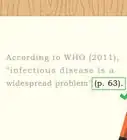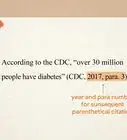This article was co-authored by wikiHow Staff. Our trained team of editors and researchers validate articles for accuracy and comprehensiveness. wikiHow's Content Management Team carefully monitors the work from our editorial staff to ensure that each article is backed by trusted research and meets our high quality standards.
This article has been viewed 21,793 times.
Learn more...
If you are writing an essay, research paper, thesis or another type of paper, it is usually required that you compile your references in a bibliography or a reference section at the end of your paper. Turabian style is a common citation style used to do this. It is composed of two different styles: the notes-bibliography style and the author-date style. Students of history, literature and the arts typically use the notes-bibliography style to cite their material. On the other hand, students of the physical, natural and social sciences typically use the author-date style to cite their material.[1] The styles are very similar, but they do have minor differences.
Steps
Using the Notes-Bibliography Style
-
1Cite a book. Start your citation by reversing the author’s name, i.e., last, first, and close it with a period. Follow the author’s name with the title of the book italicized. Follow this with a period as well. Then type the publisher’s location, a colon, the publisher, a comma, and the year of publication. End the citation with a period. Try it for yourself![2]
- For example: Eckhardt, Daisy. Healing Plants. New York: University Press, 2002.
- If your book has two or more authors, then only reverse the name of the first author. The rest of the authors’ names should be in regular format. For example: Eckhardt, Daisy, John Glass, and Michael Briggs. Healing Plants and Medicine. New York: University Press, 2005.
-
2Cite a journal article. Begin your citation by reversing the author’s name, i.e., last, first, and follow this with a period. Type and quote the title of the journal article, and follow the title with a period. Then type and italicize the name of the journal with its volume number. Follow the volume number with a comma and the issue number. Place the year of publication in parenthesis followed by a colon and the inclusive page numbers. End the citation with a period. [3]
- For example: Richard, Anna. “Race and Gender in the Classroom.” Race and Gender Studies 30, no. 2 (2010): 65-81.
- If the journal article has more than one author, then only reverse the name of the first author. Type the rest of the authors’ names in regular format.
- If you retrieved the journal article from online, then follow the inclusive page numbers with the access date and a URL (if it is an internet site), or the name of the database if it was retrieved from an online database. For example: Accessed March 15, 2015. https://www.loc.gov/. Or, Accessed March 15, 2015. Academic OneSearch.
Advertisement -
3Cite a magazine article. Start the citation by reversing the author’s name, i.e., first, last, and close it with a period. Type and quote the name of the magazine article and close it with a period. Type and italicize the magazine’s name followed by a comma and the date it was published. It's that simple![4]
- For example: Doe, James. “How to Adopt a Cat.” Cats as Pets, August 15, 2009.
- If the article has more than one author, then only reverse the first author’s name.
-
4Cite a newspaper article. Citing newspaper articles is easy! Begin the citation by reversing the author’s name followed by a period. Type and quote the title of the article, and close the title with a period. Type and italicize the name of the newspaper followed by a comma and the date it was published. Then type the date you accessed the article, a period, and the URL (if it was accessed online). End the citation with a period.
- For example: Moore, Katherine. “Women in Combat.” Houston Times, January 16, 2007. Accessed June 11, 2009.
- If the article has more than one author, then only reverse the first author’s name.
-
5Cite a website. Begin the citation by reversing the first author’s name followed by a period. Type and quote the article’s title and close it with a period. Type the name of the website and close it with a period. Then type the date of publication, a period, the date you accessed the article, a period, and the URL. End the citation with a period.[5]
- For example: Davis, Ashley. “Ten Places You Should Visit This Summer.” Travel. May 21, 2016. Accessed June 5, 2016. http://www.travel.com/2016/98/02/ten-places-you-should-visit-this-summer-555849578.
Using the Author-Date Style
-
1Cite a book. Start the citation by reversing the first author’s name followed by a period. Type the year of publication and close it with a period. Type and italicize the book’s title and close it with a period. Then type the publisher’s location, a colon, and the publisher. End the citation with a period. Now it is your turn to try![6]
- For example: Beal, Kristin. 2008. The Mongolian Empire. Chicago: University Press.
- If the book has more than one author, then only reverse the first author’s name. The rest of the authors’ names should be in regular format. For example: Beal, Kristin, Kathy Davis, and Brent Flowers. The Mongolian Empire. Chicago: University Press.
-
2Cite a journal article. Citing journal articles is simple! Begin the citation by reversing the author’s name and close it with a period. Type the year of publication. Type and quote the article’s title and close it with a period. Type and italicize the name of the journal with its volume number. Follow the volume number with a comma, the issue number, the publication month/season in parenthesis, a colon, and the inclusive page numbers. End the citation with a period.[7]
- For example: Grant, Allen. 2007. “Kindergarteners and Gender.” Journal of Gender Studies 35, no. 10 (June): 30-45.
- Remember to only reverse the first author’s name if there is more than one author.
- If you retrieved the article from online or a database, then follow the inclusive page numbers with the access date and URL or the name of the database. For example: 30-45. Accessed December 15, 2011. https://www.loc.gov/, or Academic OneSearch.
-
3Cite a magazine article. Start the citation by reversing the author’s name and close it with a period. Type the publication date and close it with a period. Type and quote the article’s title followed by a period. Type and italicize the name of the magazine. Follow the name with a comma and the month and day of publication. Try it for yourself![8]
- For example: Rodgers, Will. 2005. “Just Keep Swimming.” San Diego Times, July 18.
- Only reverse the first author’s name if the article has more than one author.
- If you accessed the article online or through a database, then follow the month and day of publication with the URL and the date accessed in parenthesis. For example: Rodgers, Will. 2005. “Just Keep Swimming.” San Diego Times, July 18. http://web.lexis-nexis.com/universe/document?_z=mlfjkcunum=4&68dfd=kjljlkjl (accessed May 29, 2005).
-
4Cite a newspaper article. Begin by reversing the author’s name. Close it with a period. Type the publication date and a period. Type and quote the article’s title and close it with a period. Type and italicize the name of the newspaper. Follow the name with a comma, the publication month and day, and a period. Then type the date you accessed the article. Follow this with a URL if you accessed the article online. Always end the citation with a period. Give it a try![9]
- For example: Collins, Brigette. 2004. “Stop and Smell the Roses.” Los Angeles Times, October 29. Accessed November 4, 2004.
-
5Cite a website. Start the citation by reversing the author’s name. Close it with a period. Type the year of publication and a period. Type and quote the article’s title and close it with a period. Type the name of the website and a period. Type the publication month, day, and a period. Follow this with the date you accessed the article, a period, and the URL. End the citation with a period. It is really that easy![10]
- For example: Tidwell, Charles. 2006. “Summer Music Festivals in Chicago.” Chicago Events. May 15. Accessed July 20, 2006. http://chicagoevents.com/2006/summer-music-festivals-in-chicago.html
-
6Parenthesize the author’s last name and date. Do this if you are making an in-text citation. If you are quoting someone directly, then place the page number in the parenthesis as well. Place the citation before the period at the end of the sentence.[11]
- For example: It takes 365 days for the earth to travel around the sun (Davis 2007).
- If it is a direct quote: “It takes 365 days for the earth to travel around the sun,” (Davis 2007, 65).
References
- ↑ http://www.press.uchicago.edu/books/turabian/turabian_citationguide.html
- ↑ http://www.press.uchicago.edu/books/turabian/turabian_citationguide.html
- ↑ http://www.press.uchicago.edu/books/turabian/turabian_citationguide.html
- ↑ https://lib.trinity.edu/wp-content/uploads/2018/01/Turabian-Notes-Citations.pdf
- ↑ https://lib.trinity.edu/wp-content/uploads/2018/01/Turabian-Notes-Citations.pdf
- ↑ http://www.press.uchicago.edu/books/turabian/turabian_citationguide.html
- ↑ http://www.press.uchicago.edu/books/turabian/turabian_citationguide.html
- ↑ https://lib.trinity.edu/wp-content/uploads/2018/07/Turabian-9th-ed-Author-Date_rev.pdf
- ↑ https://lib.trinity.edu/wp-content/uploads/2018/07/Turabian-9th-ed-Author-Date_rev.pdf


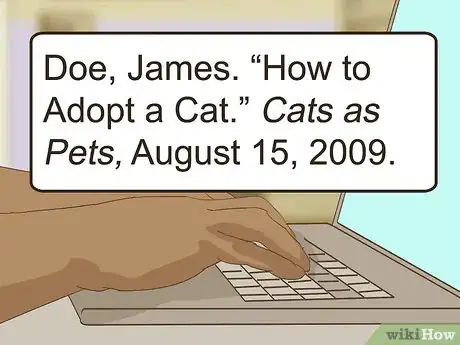
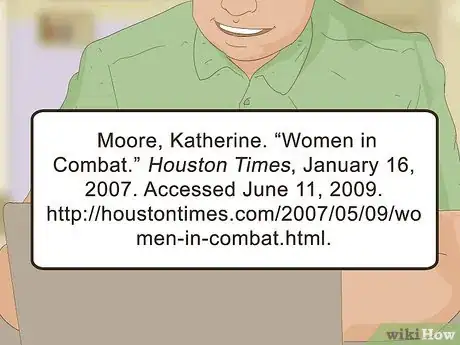


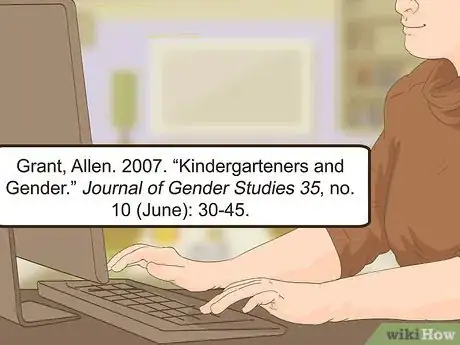
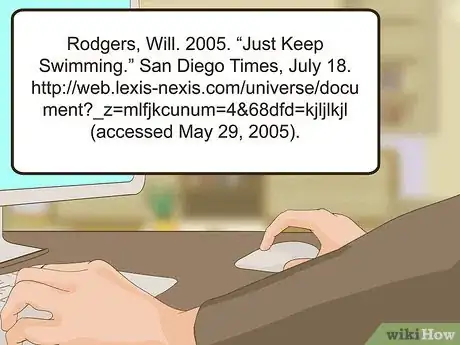

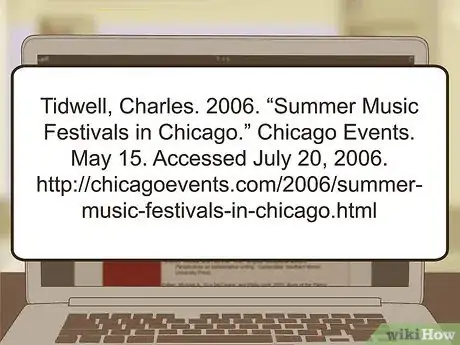
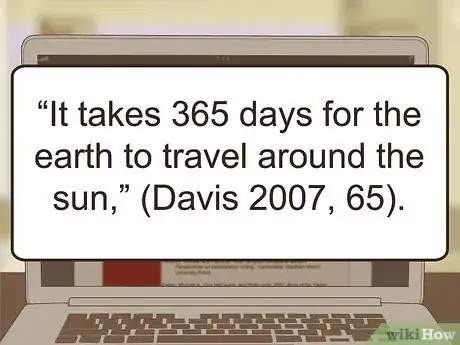
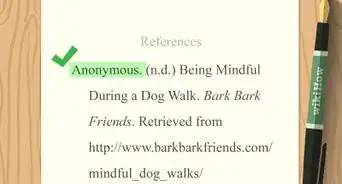



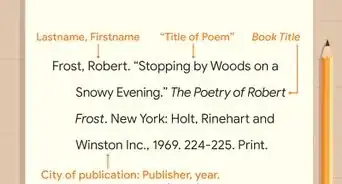
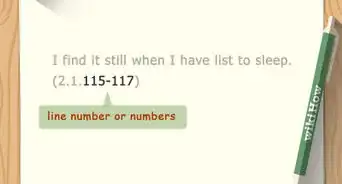
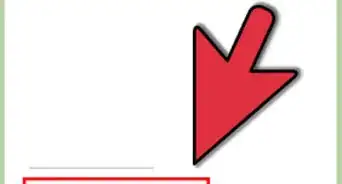


-Step-18.webp)
